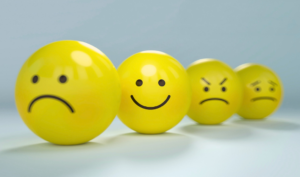
Talent in Harmony: Linking Work-Life Balance and Wellbeing
In a world where great talent is hard to find, emphasizing employee self-care and work-life balance gives employers a serious competitive advantage. Fostering a culture

In a world where great talent is hard to find, emphasizing employee self-care and work-life balance gives employers a serious competitive advantage. Fostering a culture

The Covid pandemic may have subsided, but employers continue to face an epidemic of a different kind — work burnout. According to recent SHRM research,

If your organization is aiming to attract and retain a high-quality workforce, it’s essential to understand how employee needs are evolving. Each generation has a

As organizations move beyond the pandemic, workforce development is changing in fundamental ways. For example, wellbeing has emerged as a top workforce priority, and this

Are you bracing for “Blue Monday“? The third Monday in January has become notorious as the saddest day of the year. Its dubious reputation stems

In today’s competitive post-pandemic world of work, HR and business leaders recognize that employee wellbeing is a must-have for a strong, successful organizational culture. This

The Problem With Grind Culture In recent years, “hustle” and “grind” culture have become equated with drive, ambition, and success. The logic is that if

In today’s fractured, post-pandemic world, workforce mental health has emerged as a critical concern for business and HR leaders — and with good reason. The

Music is a great unifier. In our private lives, shared tunes always have a way of bringing people together to sing, dance, laugh and socialize.

Cognitive decline is a tricky subject. It can be caused by a variety of factors – from natural aging to hypothyroidism to Alzheimer’s disease. Sometimes,

Every leader appreciates diligent team members who are engaged, reliable performers. However, there’s a fine line between people who take their work commitments seriously and

One workplace buzzword many people are eager to leave behind is “quiet quitting.” The phrase dominated headlines this year, especially when a Gallup poll revealed

EDITOR’S NOTE: At TalentCulture, we recognize a healthy workforce is a more engaged and productive workforce. That’s why we’re spreading the word about the importance

“Do you listen to the girl in red?” It’s a good question for anyone whose job it is to understand workplace culture and employee mental

Employee burnout is real. According to a Gallup poll, a staggering 76% of employees experience some form of burnout in their careers. In a survey

The pandemic has brought significant physical and mental health concerns to people around the world. With business closings, reductions in force, and forced isolation for

It seems like worker resilience has become the HR topic of the day. The pandemic suddenly forced people to work from home last year. Soon

Today’s workplace trends continue to cause a dramatic shift for organizations, employees, customers, and suppliers. Paraphrasing the cliché, “The only real known is that change

We live in a world that is constantly in “on” mode. Smart phones, computers, emails, and phone calls; even after you clock off from work,

Grand as it may be, today’s “always on” connectivity experiment is taking a toll, and business leaders are just starting to respond. But how can we help ourselves?